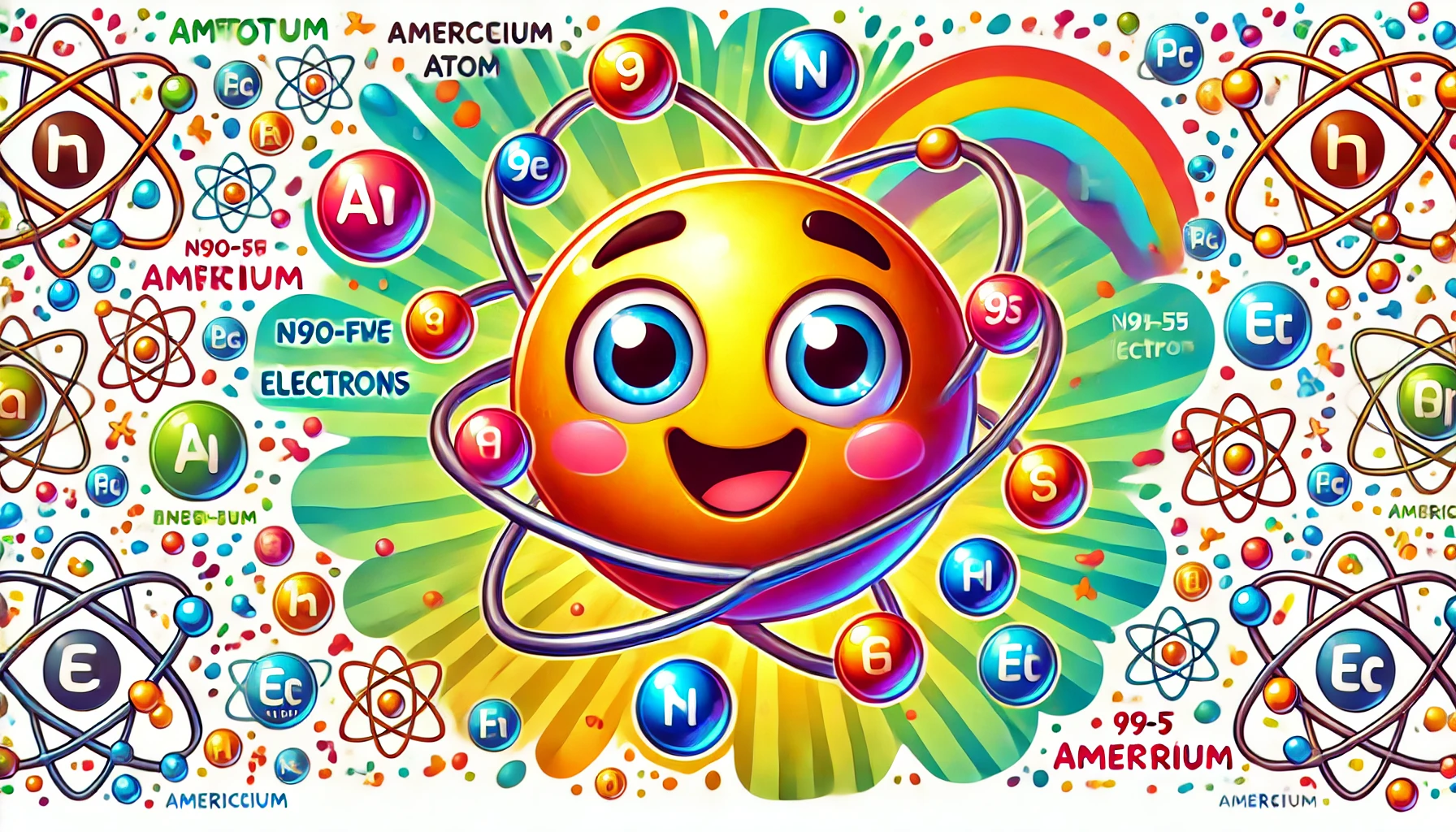Understanding Americium: Properties, Uses, Health Risks, and Fascinating Facts
Understanding Americium: Properties, Uses, Health Risks, and Fascinating Facts
Table of Contents
- Introduction to Americium
- Properties of Americium
- Uses of Americium
- Health Risks of Americium Exposure
- Interesting Facts about Americium
- Environmental Impact of Americium
- Conclusion
- References
Understanding Americium: Properties, Uses, Health Risks, and Fascinating Facts
Introduction to Americium Americium is a chemical element with the symbol Am and atomic number 95. It is a highly radioactive metal in the actinide series, known for its use in smoke detectors and industrial gauges. This article explores the properties, uses, health risks, and interesting facts associated with americium, providing a comprehensive understanding of this element.
Properties of Americium Americium is characterized by several distinct physical and chemical properties.
Physical Properties
- Appearance: Americium is a silvery-white metal that tarnishes slowly in air.
- Density: The density of americium is 12 g/cm³.
- Melting Point: Americium has a melting point of 1,176°C (2,149°F).
- Boiling Point: The boiling point of americium is 2,011°C (3,652°F).
Chemical Properties
- Reactivity: Americium is chemically reactive and can form compounds with various elements, including oxygen, halogens, and nitrogen.
- Compounds: Americium forms various compounds, such as americium dioxide (AmO₂), americium chloride (AmCl₃), and americium nitrate (Am(NO₃)₃).
Uses of Americium Americium has several applications, particularly in the fields of industry and research.
Smoke Detectors
- Ionization Smoke Detectors: Americium-241 is widely used in ionization smoke detectors. It emits alpha particles, which ionize the air and create a small electric current. When smoke enters the detector, it disrupts the current, triggering the alarm.
Industrial Gauges
- Thickness Gauges: Americium is used in industrial gauges to measure the thickness of materials such as paper, glass, and metal.
- Moisture and Density Gauges: Americium-241 is used in gauges that measure moisture content and density in soil and construction materials.
Scientific Research
- Neutron Sources: Americium is used in neutron sources for research and industrial applications.
- Nuclear Batteries: Americium-241 is used in radioisotope thermoelectric generators (RTGs) to provide power for remote locations and space missions.
Health Risks of Americium Exposure Americium is highly radioactive, and exposure can pose significant health risks.
Inhalation and Ingestion
- Radiation Poisoning: Inhalation or ingestion of americium can cause severe radiation poisoning, with symptoms including nausea, vomiting, hair loss, and damage to internal organs.
- Bone Accumulation: Americium can accumulate in the bones, liver, and muscles, increasing the risk of cancer and other health issues.
Skin and Eye Contact
- Radiation Burns: Direct contact with americium can cause severe radiation burns on the skin.
- Eye Damage: Exposure to americium dust or vapors can cause eye damage and potential blindness.
Chronic Exposure
- Cancer Risk: Prolonged exposure to americium increases the risk of developing various cancers due to its high radioactivity.
Interesting Facts about Americium Americium has several intriguing aspects that make it an interesting element.
Discovery
- Discovered in 1944: Americium was discovered by a team of scientists led by Glenn T. Seaborg at the University of Chicago in 1944 during the Manhattan Project. It was named after the Americas.
Unique Properties
- Radioactivity: Americium is highly radioactive, with several isotopes that are important for various applications.
- Alpha Emission: Americium-241 emits alpha particles, which are used in smoke detectors and industrial gauges.
Isotopes
- Radioactive Isotopes: Americium has no stable isotopes. The most common isotopes are americium-241 and americium-243, each with distinct uses in technology and research.
Environmental Impact of Americium Americium is highly toxic to the environment and can pose significant risks to ecosystems and human health.
Natural Occurrence
- Abundance: Americium is not found naturally and is produced synthetically in nuclear reactors.
- Production: Americium is often produced as a byproduct of plutonium decay in nuclear reactors.
Pollution and Bioaccumulation
- Environmental Pollution: Americium can enter the environment through industrial emissions, nuclear testing, and improper disposal of radioactive materials.
- Bioaccumulation: Americium can accumulate in the food chain, posing risks to wildlife and humans who consume contaminated food and water.
Waste Management
- Nuclear Waste: Americium is a component of nuclear waste and poses long-term storage challenges due to its long half-life and high radioactivity. Effective management and containment strategies are crucial to mitigate its environmental impact.
Conclusion Understanding americium, its properties, uses, health risks, and interesting facts provides valuable insight into this significant element. While americium has crucial applications, particularly in smoke detectors and industrial gauges, its high radioactivity and associated health risks necessitate careful handling and responsible management. Ongoing research and advancements in technology continue to shed light on the complexities and potential uses of americium in modern science and industry.

<ⓒ WizardMedics (wizardmedics.com)>






